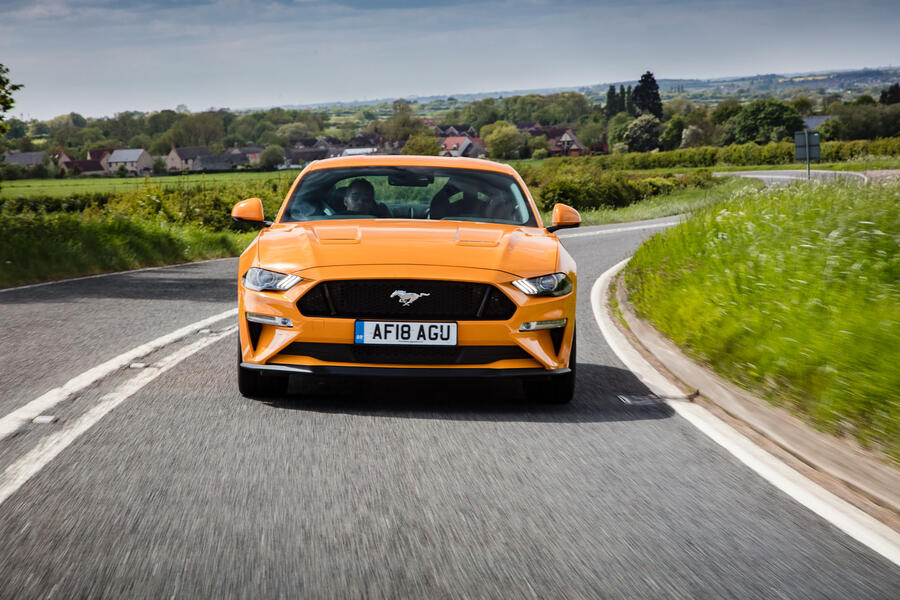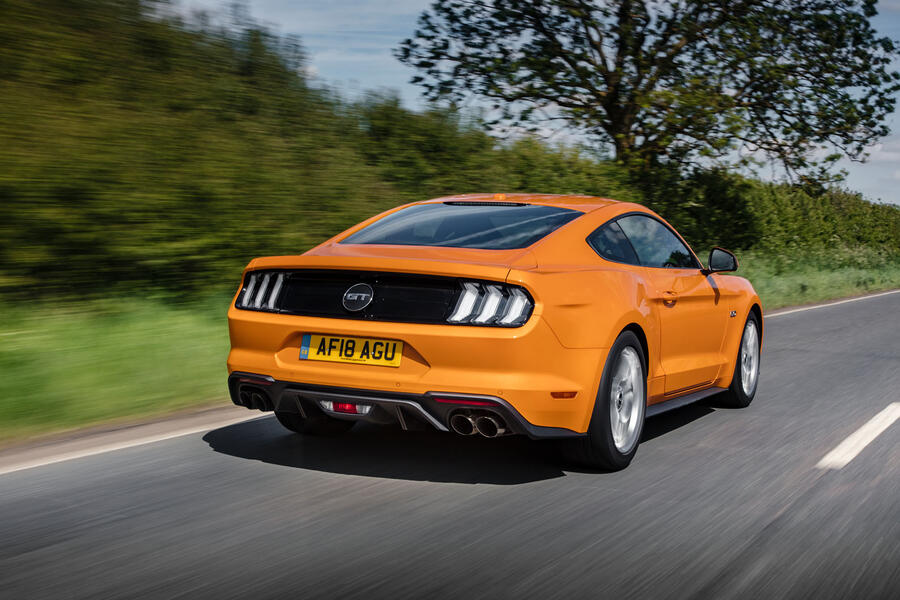You know where you stand with a Mustang – it’s going to feel old-school to a degree, for which you’re going to like it in the main.
This facelift is a bit different, though. The instrument cluster is now entirely digital, for a start, with a 12in display whose colours can be customised. The readouts also change depending on which mode you’re in, starting out looking just a bit staid in Normal but ramping up to a vast horizontal tacho in Track and even a ‘Christmas Tree’ lights in Drag Strip. Yes, that’s Ford’s name for launch control.
Elsewhere the cabin remains as it was – vast, with chunky switchgear, and seats more accurately described as ‘chairs’. And remember, the sixth-generation car also remains the first of its kind to be offered in right-hand drive, which is nice.
Buy a Mustang and you still get a choice of two engines – either a turbocharged 2.3-litre EcoBoost that’s now been tickled to develop a little more torque at the expense of outright power or the 5.0-litre V8 whom for many owners will be a no-brainer. With a manual gearbox, of course.
Going for the four-cyl EcoBoost will save you about £5500 up front. Throttle response is fine and 350lb ft means you could never call it ‘slow’ with a straight face. However, if you consider a bellyful of effortless shove a core constituent of the Mustang experience – and, frankly, we do – then it’s hard not to find it a bit gutless through the mid-range. That it becomes so breathless at higher crank speeds merely seals its fate as second fiddle to the V8.
Those eight cylinders remain likeably lazy in their waffling, ever-so-slightly flatulent power delivery, which is up from 410bhp to 444bhp – an exact match for a BMW Competition Pack. With the 10-speed ’box, the 0-62mph time drops to 4.3sec, which the car feels good for as it roars off the line, powerboat-style.
That time is achievable only with that new automatic ’box, which for cruising is an inoffensive device, upshifting gently at roughly 2000rpm and side-stepping second gear altogether thanks to those fancy solenoids. In the car’s most relaxed mode, barely have you pulled away and you’re already into sixth or even seventh, and for the some that’ll be just dandy.
However, getting the most out of the engine requires either knocking the gearselect into ‘S’ or pulling one of the plastic paddleshifters mounted on the steering wheel. The former raises the default upshift point to around 3000rpm but will allow the crankshaft to spin to beyond 7000rpm if you’re in enough of a hurry.
Upshifts don’t exactly match a Porsche PDK for precision but neither are they required to in a Mustang. They’re adequately quick and seamless, though downshifts can sometimes jerk. The transmission’s incessant hunting for just the right gear can irk, mind.
In fact, it’s a layer of fussiness the Mustang could do without, because this chassis doesn’t half like the road to be smooth. A generous wheelbase and good natural balance allow the car to settle into a decently composed gait. It’s one that can give you a false sense of security, even, because it’ll permit to you carry considerable speed through most corners while using generous levels of body roll to keep the contact patches squished into the road.
Were British roads predictably surfaced that’d be the end of it, but they’re not, and so the Mustang comes unstuck where most European sports car simply wouldn’t. The biggest offender is vertical control, which whether concerning either the passive or £1600 adaptive MagneRide suspension handles a solitary input – a ripple in the tarmac, say – decently well but quickly falls behind the roads when those inputs arrive rapid-fire.
Progress can come a little cantankerous, and so you quickly learn to identify the Mustang’s natural rhythm on a given road and stick to it. Do so and it’s an undeniably pleasant, composed steer.
Elsewhere, there’s also now a ‘My Mode’ that allows to collate various settings. This is the sort of thing that should be mandatory on any performance car with numerous switchable parameters, so good on Ford for introducing it.


